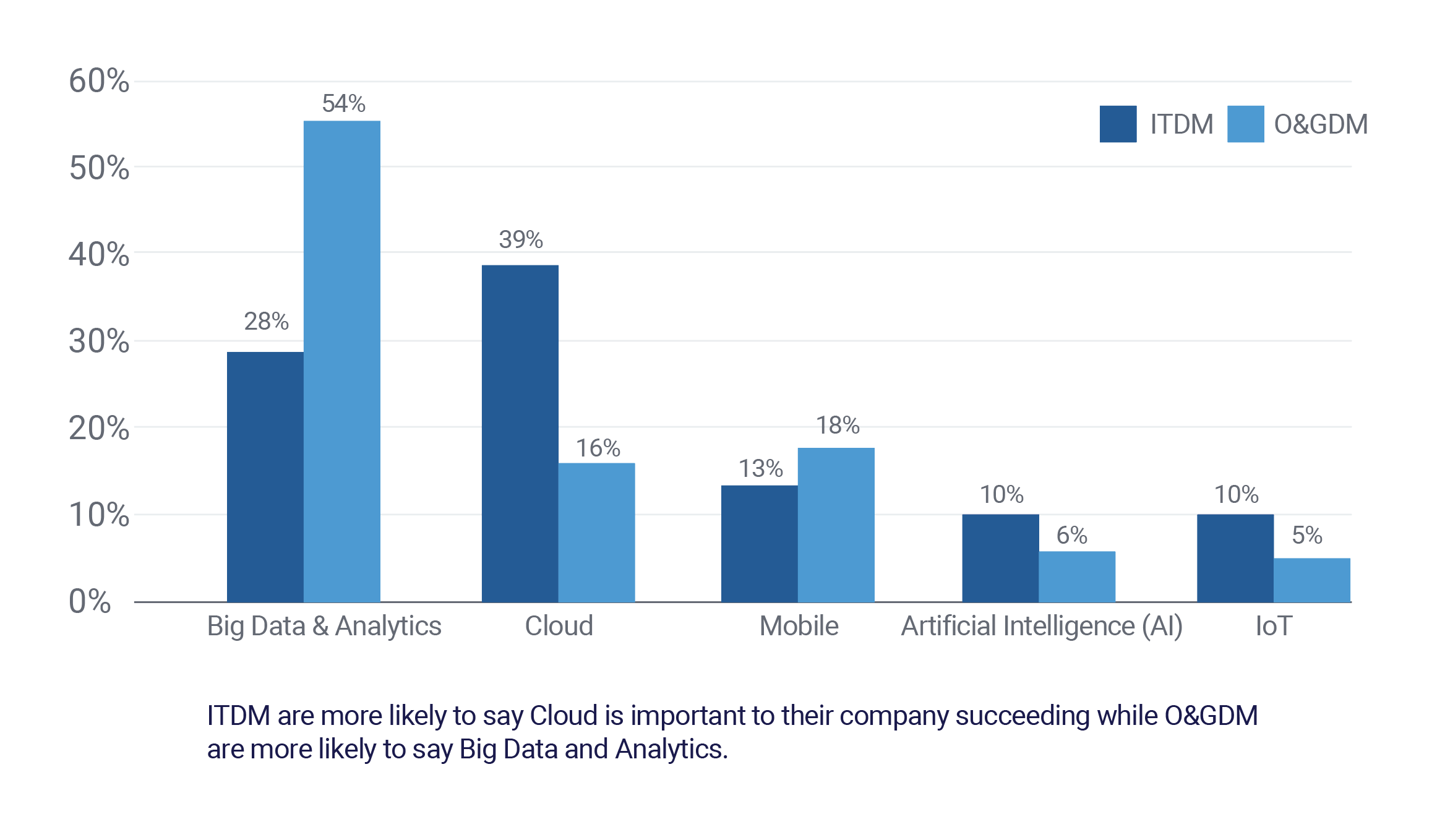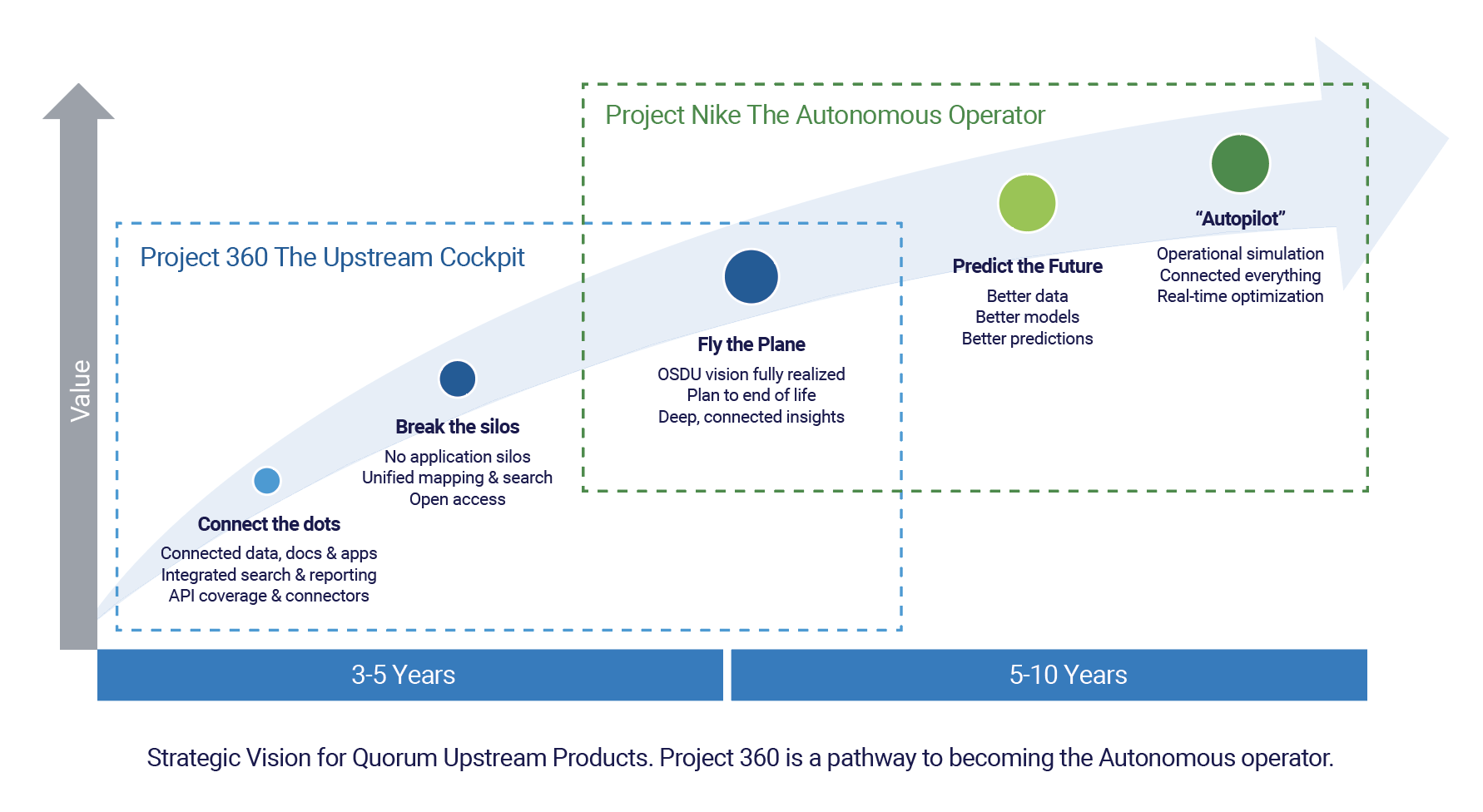Introduction to the Oil & Gas Digital Journey
Every organization is on a digital journey. The ultimate goal is not the destination, but rather an ongoing transformation where every decision helps propel you towards becoming a more digital business. Oil and gas is at the center of this digital transformation. Companies of all sizes are seeking new and innovative ways to use technology to harness real-time access to quality data they can apply across their business to make smarter, more informed decisions. No matter where you are in this transformation journey, a well-defined digital strategy is key to enabling your organizational agility and accelerating growth.
In this digital journey series, we’ll share research on technology trends, tools, and best practices and provide actionable next steps to establish a digital strategy that aligns with your business goals.
Five Part Digital Journey Series for Upstream Oil & Gas
It is an exciting time in the energy industry. Macro changes are having a transformational impact that will fundamentally change the nature of the business over the next 30 years. These include:
- At a global level, a focus on net-zero carbon emissions in response to climate change is permanently altering the energy mix and driving a demand for cleaner and safer hydrocarbon production and usage.
- The oil and gas industry is facing the reality of lower fuel prices for longer which demands that organizations maintain a laser focus on cost reduction and production optimization.
- Attracting capital investment in the traditional energy industry has become more challenging. Operators must increasingly work within cash flows with greater emphasis on scale.
These changes are accelerating the advancement of technology, specifically digital technology. The companies that will succeed are those making the necessary infrastructure and organizational investments to adopt the new technologies required to drive their digital transformation.
Becoming clearer, is the importance of not only data, but data quality as the foundation of the digital transformation. Access to integrated data you can trust is critical. This goes beyond the significant advances in the technology required to store, manage and transport exponentially increasing volumes of data to a re-focus on the importance of global standards for consistency in the definition and exchange of information. The nexus of the infrastructure and standards definitions has resulted in a push to establish open energy data platforms that will support enterprise level reporting, visualization, analytics, and advanced data science. As a key participant involved in developing these global standards, Quorum began an initiative to understand the industry and technology trends that influence the energy industry. Our objective is to better align our solutions and services portfolio to meet the needs of our customer base. This initiative involved many interviews with customers and IT Decision Makers (ITDMs), attending numerous conferences, and reviewing countless publications.
As a key participant involved in developing these global standards, Quorum began an initiative to understand the industry and technology trends that influence the energy industry. Our objective is to better align our solutions and services portfolio to meet the needs of our customer base. This initiative involved many interviews with customers and IT Decision Makers (ITDMs), attending numerous conferences, and reviewing countless publications.
Through this digital journey series, we’ll present a summary of the key trends, and respond to significant questions that are facing the oil and gas industry today. We will also share how Quorum’s product roadmap aligns with these trends to establish an innovative digital strategy that works closely with our customer base and aligns broadly to the oil and gas industry.
 This digital journey series is organized into five parts, as follows:
This digital journey series is organized into five parts, as follows:
- Energy Transition: You will learn the key trends that are shaping the industry and driving the adoption of digital technology. We will look at the primary challenges that operators are facing and how they are applying digital technology to overcome these obstacles.
- Digital Acceleration: You will learn our findings from our ITDM research. We will discuss what digital initiatives companies are focused on in different market segments (size, geography), and whether this would be classified as modernization (evolution) or transformation. We will include a review of best practices based upon what has worked for companies both in the oil and gas industry and in peer industries and, just as importantly, what has not.
- Energy Data Platform: You will learn current initiatives that are underway throughout the industry to build out an energy data platform as the foundation of a digital strategy. We will share the key components involved in delivering an energy data platform and how initiatives such as the OSDU are influencing organizations across the industry.
- Quorum Vision: The primary reason for undertaking this comprehensive research is to ensure that Quorum’s product roadmap is aligned with industry and technological trends to meet the business needs of our customers. In this article, we will present Quorum’s upstream vision and product strategy to establish a common digital roadmap for the future.
- Digital Strategy: Successful companies have created a digital strategy that is fully aligned with the corporate business strategy. In this article, you will learn the primary components of a digital strategy and how organizations are measuring progress in terms of achieving their goals.
This series is intended to describe critical aspects of the digital journey that oil and gas companies are undertaking. You will map your own path and goals unique to your organization. But the one thing in common, is that the goal posts will move during each journey and a willingness to adapt is a key to long-term success. The same is true for Quorum. The upstream product roadmap will change according to shifting industry and technology trends and it is our goal to work closely with customers and industry leaders to ensure that we are on the same digital journey.
Learn more about EnergyIQ by Quorum Software or browse more resources to gain industry insights about technology trends from IT leaders.
 Previous Page
Previous Page